Shake That City is a city building tile placement game for 1-4 players. The game includes a fun and exciting “cube shaker” that randomly places cubes thrown into it on the table in a 3×3 grid pattern. This is another exciting title announced by Alderac Entertainment Group (AEG) which fits into the family weight game category which they have proven they are masters of. Shake That City will be launched on Kickstarter on November 29th and continue until December 16th. AEG has published other games like Wormholes which is a fast space themed game, TEN a fun fast card game, Whirling Witchcraft a great Halloween game but also gets played throughout the year, and Cascadia which has brought home many awards.
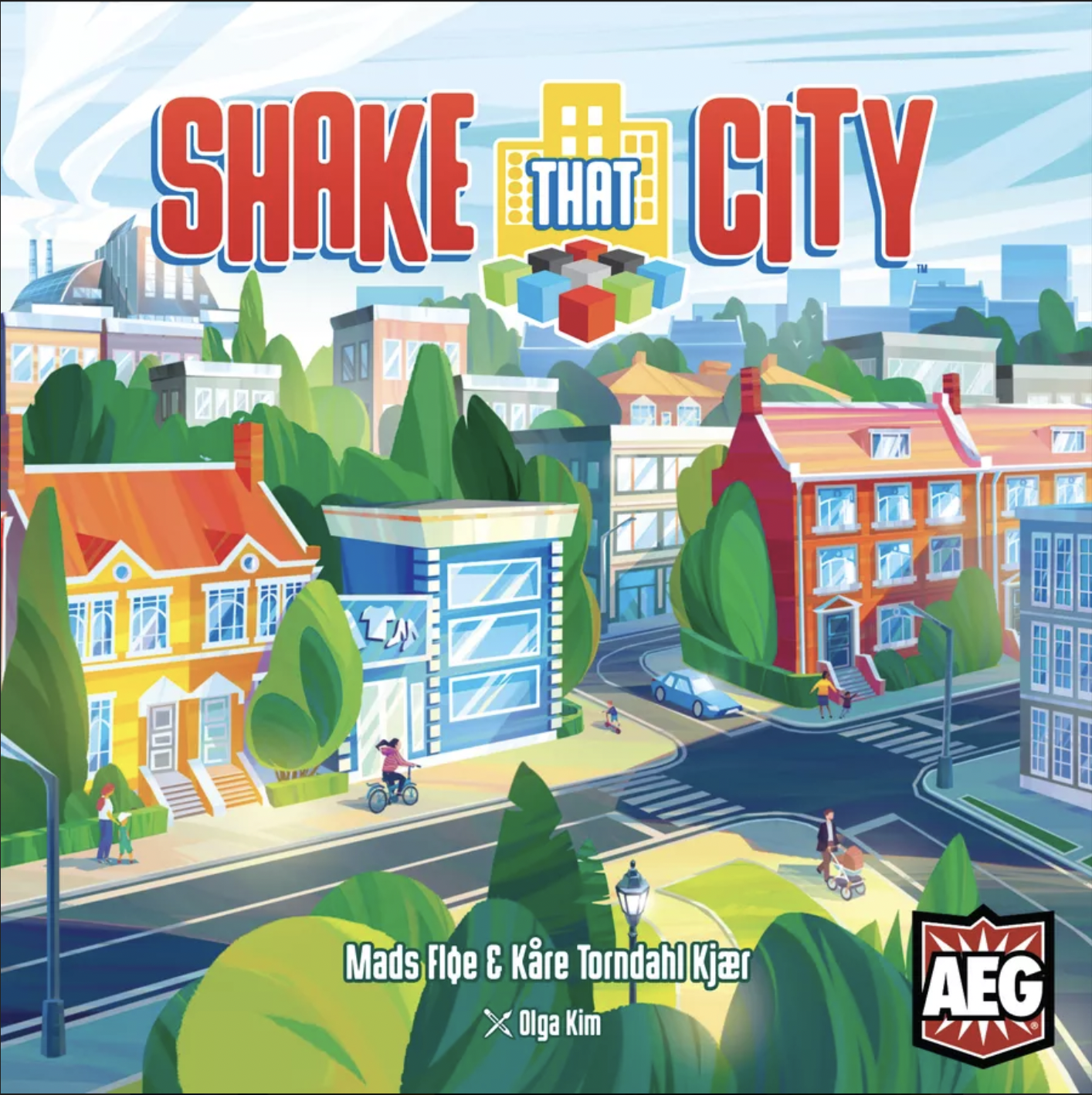
What’s in the Box?
- 4 Player Boards
- 1 Cube Shaker
- 2 Score Reference Boards
- 1 Round Tracker Board
- 1 Round Tracker Disk
- 1 Score Pad
- 32 Wooden Cubes (8 red, 7 blue, 6 black, 6 green, 5 gray).
- 40 Home Tiles
- 40 Shop Tiles
- 40 Factory Tiles
- 40 Park Tiles
- 40 Road Tiles
- 28 Bonus Point Tiles
- 16 Construction Variant Tiles
- 27 Mini Building Tiles
- 1 Rulebook
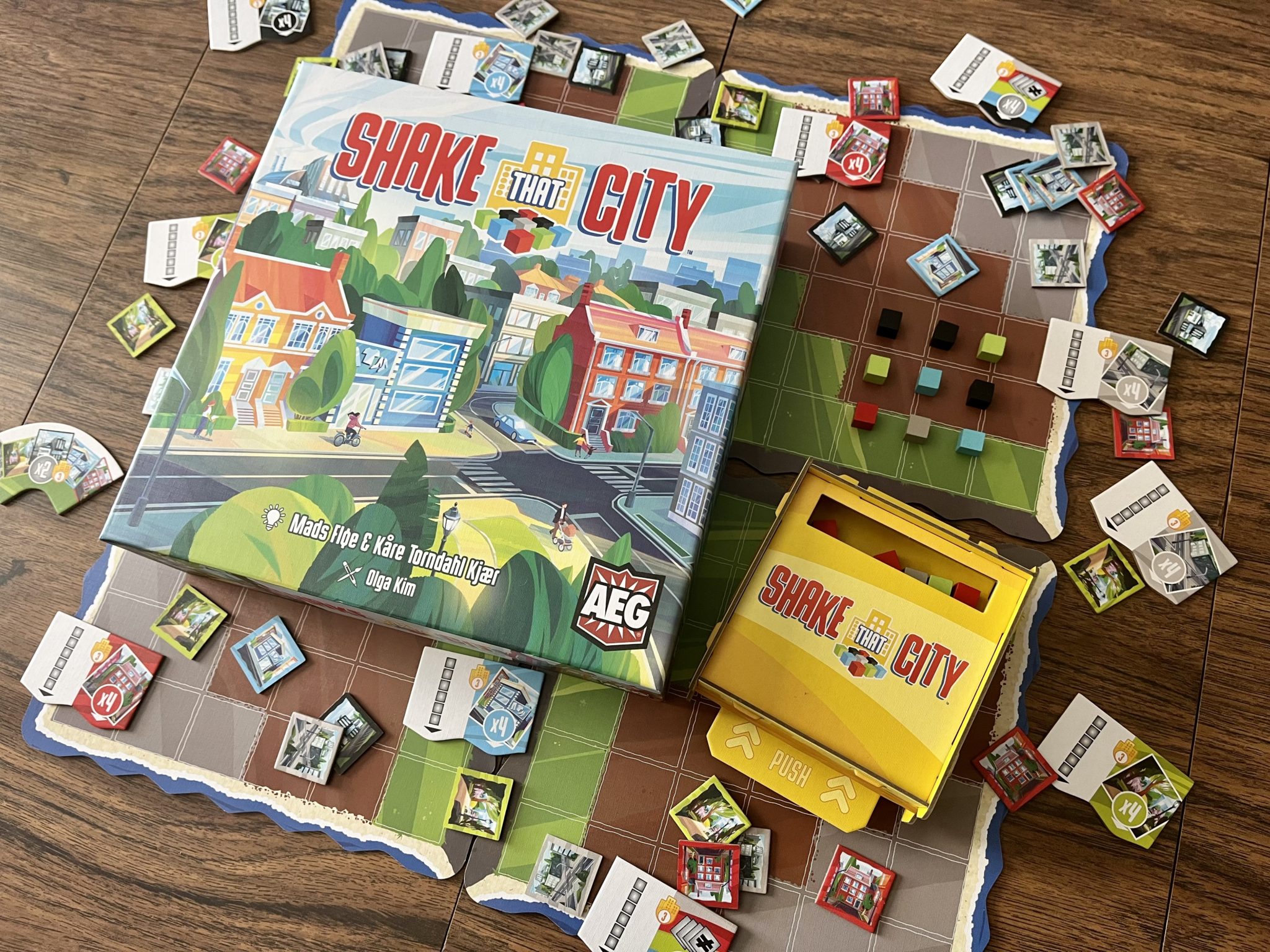
How’s It Play?
Each round the cubes are shaken in the cube shaker and 9 cubes come out in a 3×3 grid. The active player chooses one building color from the cubes to place the same amount of building tiles in the same orientation as they appeared in the 3×3 cube grid. All other non active players will choose one of the other colors to add to their board. Buildings are then placed on each players board. Each type of tile is rewarded and scored differently, so players will try to place them in the best spots to score the most points. The next round then continues the same way with the next player in clockwise order becoming the first player. After 15 rounds end game scoring is performed.
1. Shake the Cubes
And active player will put all cubes from the round before inside the cube shaker and shake it around while still keeping it flush on the table. The player will then press the slider on the cube shaker to drop 9 cubes in a 3×3 grid down. Before lifting the cube shaker, it is best to move it either right or left and then up or down to put the cubes in a nice 3×3 grid. Then the player lifts the cube shaker up and there it is, 9 cubes in a 3×3 grid.
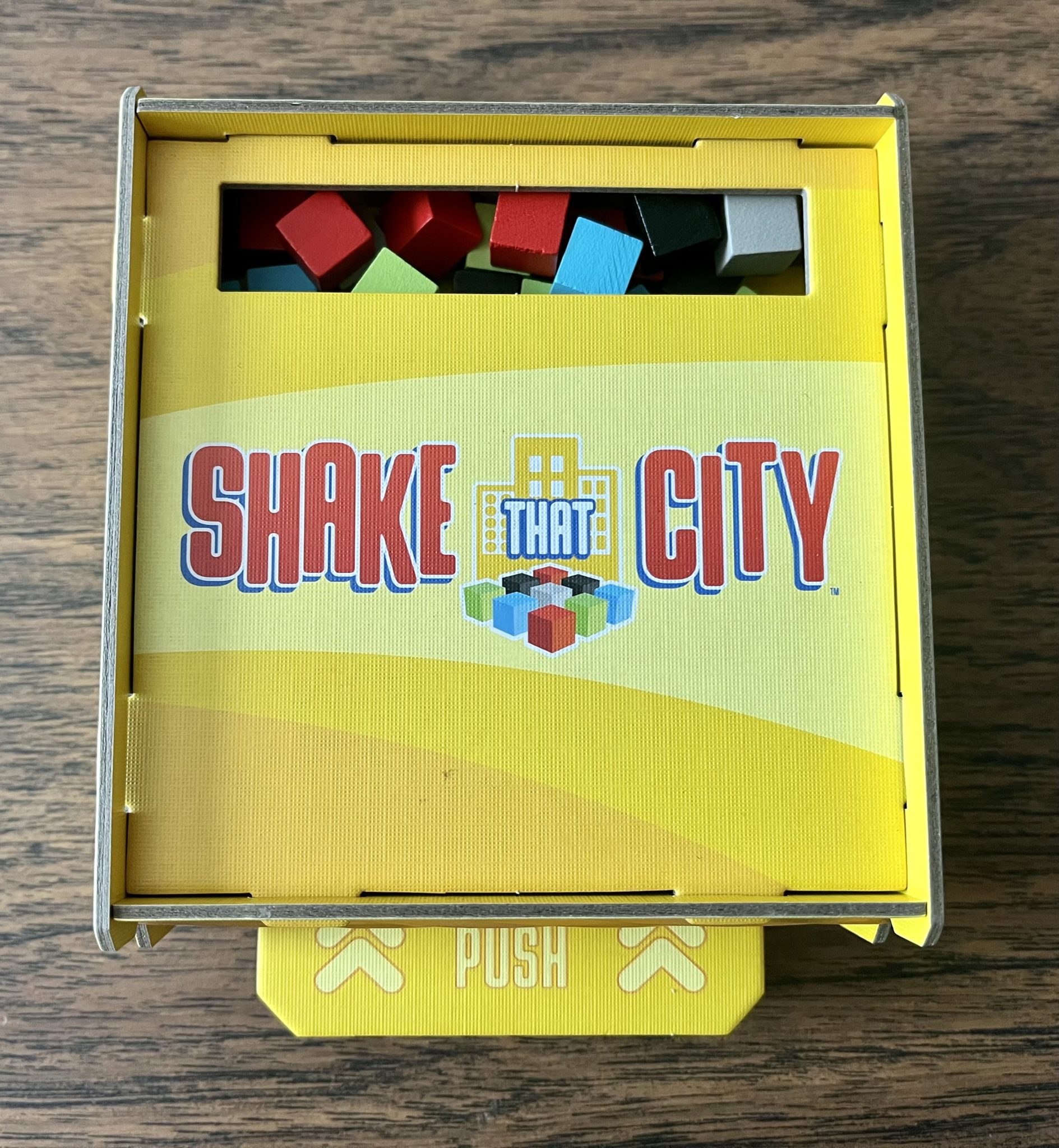
2. Choose Building Colors
The active player will pick one building color from the pattern that only they can use for that round. All other players will then simultaneously pick any other color from the pattern. Non-active players can choose the same color just not the same as the active player’s chosen color.
3. Place Building Tiles
Each cube color corresponds to a building tile with the same color border. Gray cubes are roads, green cubes are parks, black cubes are factories, blue cubes are shops, and red cubes are homes. When you choose a building color, you will take the same number of building tiles in the same color and place them on your player board. Tiles have to be placed in an empty space. The pattern must be the exact same as shown by the cube pattern. You must place all tiles in the exact configuration, if you cannot place it anywhere on your board, you cannot choose that color. Once tiles are placed, they can never be moved.
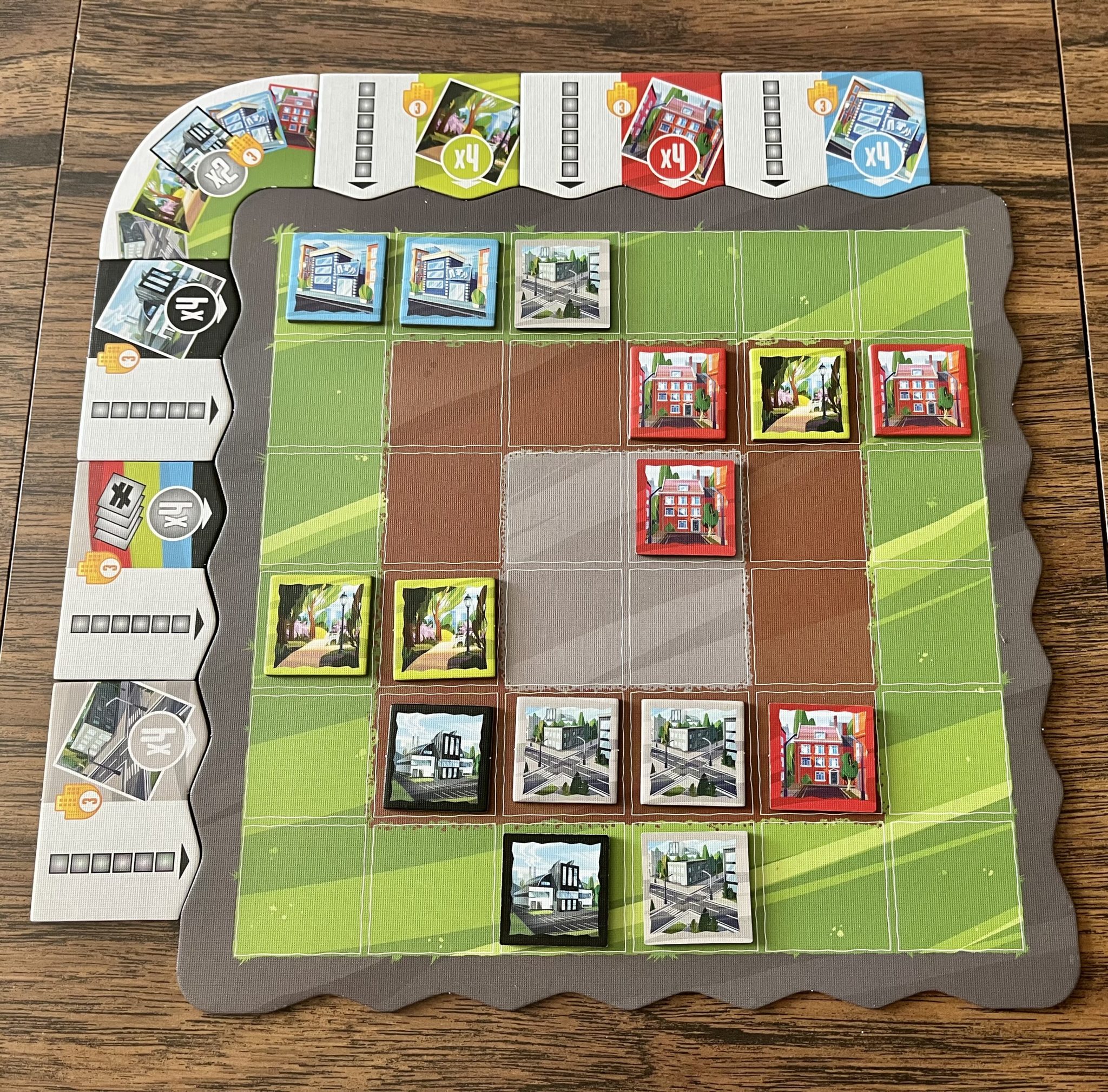
4. End of Round
When all players have finished placing their building tiles, the active player moves the round tracker disk forward one space on the round tracker board. They put the cubes from the center of the table back into the cube shaker and pass it clockwise to the next player. They are the next active player for the next round.
Rounds 13,14, and 15 are played slightly different, as all colors can be chosen by all players. The active player no longer blocks that color from everyone else.
When placing your tiles on your board, you will want to place them on your board where you can score points when the end of the game comes. There are 2 sides of the player board, and tiles score differently for each side.
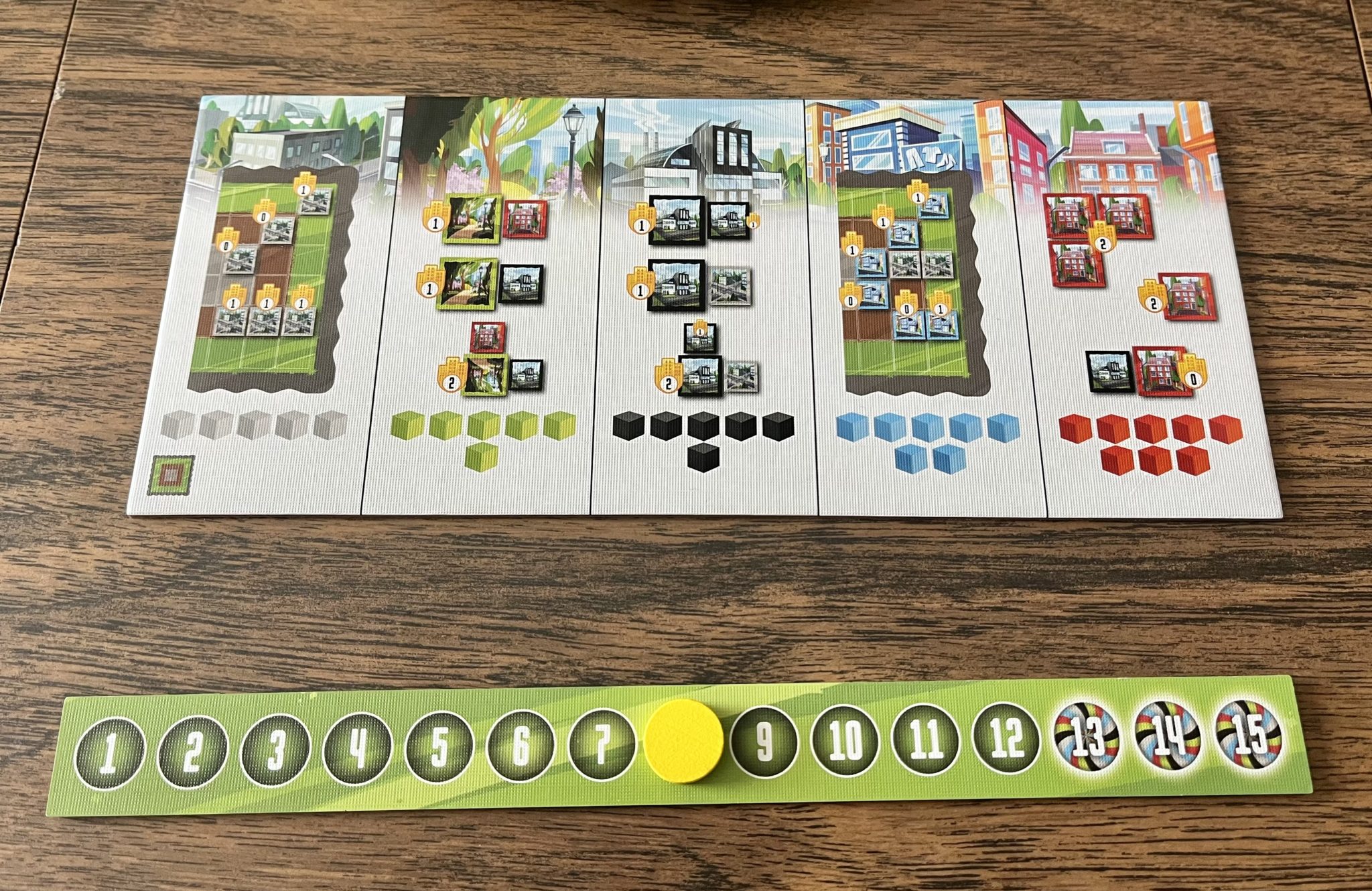
Roads – These need to be connected out of town to a concrete edge of the player board. If so, they score a point each.
Parks – They want to be by homes and factories. They will score 1 point if next to any number of homes, 1 point if next to any number of factories, and 2 points if that park is next to any number of homes and factories.
Factories – They want to be next to other factories and roads to continue their operations. They score 1 point if next to any number of factories, 1 point if next to any number of roads, and 2 points if next to any number of factories and roads.
Shops – They do better when in the gray and brown zones on your board. They score according to the zone they are located in and will only score if they are connect by a road leading out of town. This is 3 points in the gray area, 2 points in the brown area, and 1 point if in the green area.
Homes – They do better on their own and don’t score more for extra crowded neighborhoods. Homes score 2 points per connected segment unless they are located next to a factory. When a home is located next to a factory, it scores zero points.
Points are awarded from all tiles, but also there are bonus tiles that require you to either have 4 of the stated type of tile in that row or column, or to have 6 tiles in that entire row of column. If you complete one side or the other of a bonus tile, you will score 3 more points.
The player who scores the most points between their tiles and the bonus tiles at the end of 15 rounds wins the game.
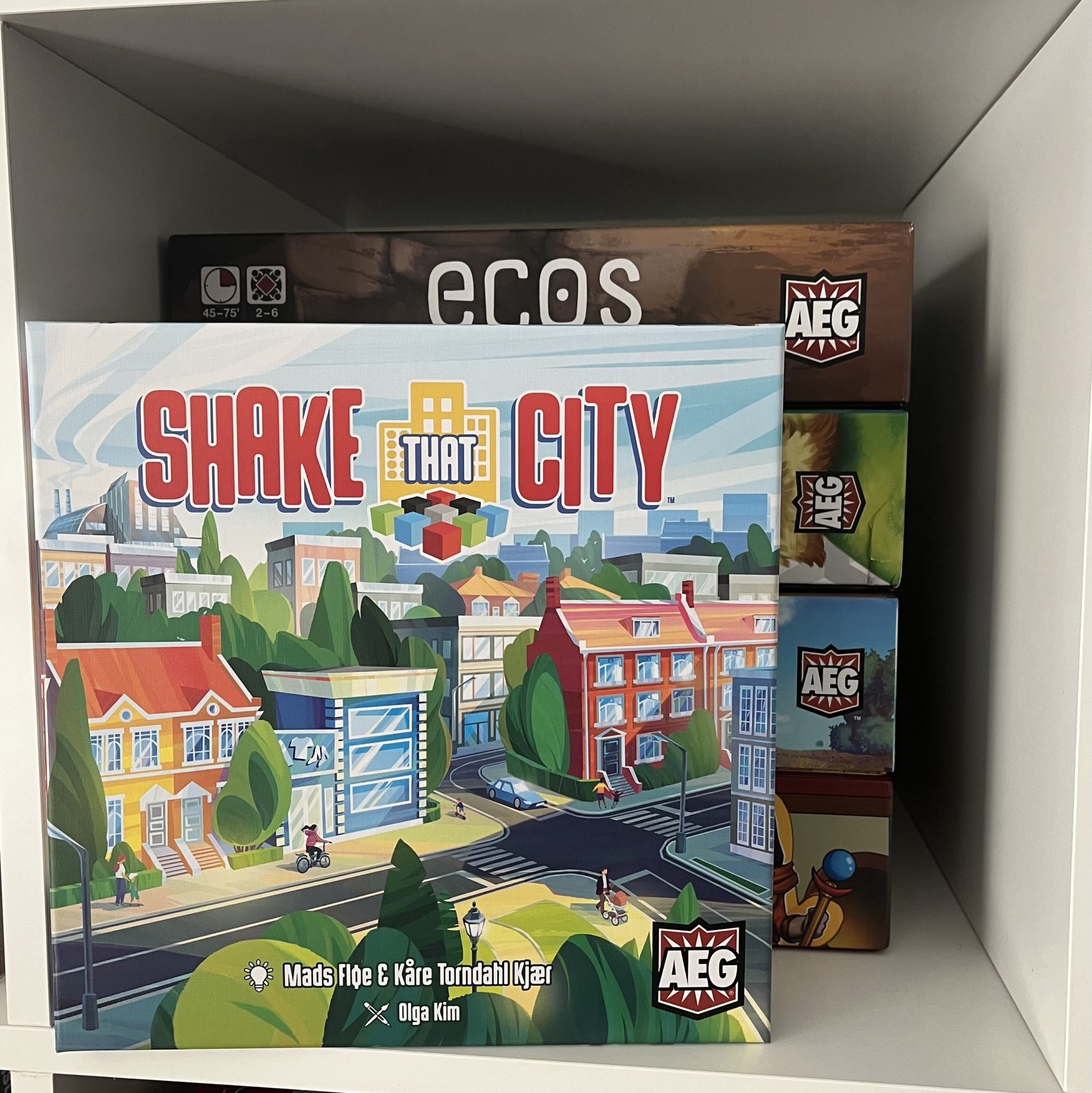
The Verdict
The star of this game is definitely the cube shaker. There are 32 cubes and any of them can land anywhere in the cube shaker that pumps out a 3×3 grid of cubes each round. These small patterns are very important to each player who are architects of their own city. If a certain cubes lands somewhere it can cause players to sometimes not be able to choose that color of tiles in their city that round, or maybe deciding they don’t want to as it won’t benefit them like maybe other would.
The strategy holds to the decision of what color cubes or tiles you pick to add those types of tiles to your player board. Eventually you want very specific tiles in certain spots to help you score the most points. Due to the small patterns tiles might come in, you will be placing tiles randomly around the entire board. You might try to focus on the corner or section, but if you really want a road, but one doesn’t show, you still have to choose different tiles to add.
Sometimes adding smaller patterns or colors of tiles when they appear solo in the 3×3 grid gives you a better opportunity to place it exactly where you need or want it, but you also have a board that is 6×6, so you want to try to take advantage of all that area as well. You might want to choose colors when the appear with multiples and other times when it appears by itself. It’s all part of that strategy.
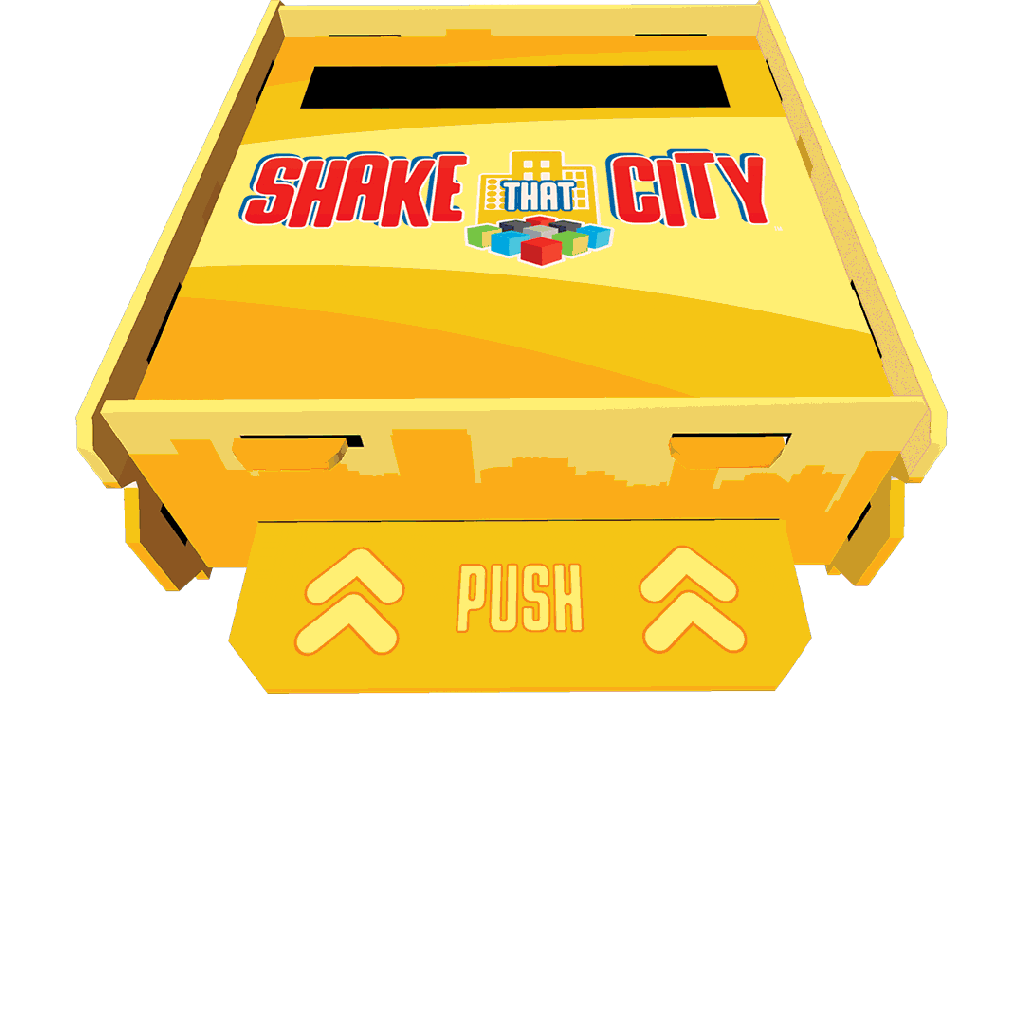
The tiles also is one part, but scoring the bonus tiles is an added way to gain some extra points. Focusing and completing the bonus tiles can put one player over another. The bonus tiles can be focused on or not focused on during the game, but players should at least try to complete some of these if they want to compete in winning the game.
The game gives me similar feeling as Tiny Towns. They are different games, but in both you are building a city. Shake That City causes you to add tiles to your board, but by following specific rules. Everyone likes building things, you feel productive when playing the game. The game also isn’t complex that you don’t know what you’re doing in the game. My kids are able to play this game with me because it’s a straight forward game, and because they can play the game, it will get to the table often.
This is once again a hit family weight game by AEG continuing on their cycle of great titles that come out in the family weight category.
Back the Game on Kickstarter on November 29th, 2022.
Images via Alderac Entertainment Group
Have strong thoughts about this piece you need to share? Or maybe there’s something else on your mind you’re wanting to talk about with fellow Fandomentals? Head on over to our Community server to join in the conversation!

